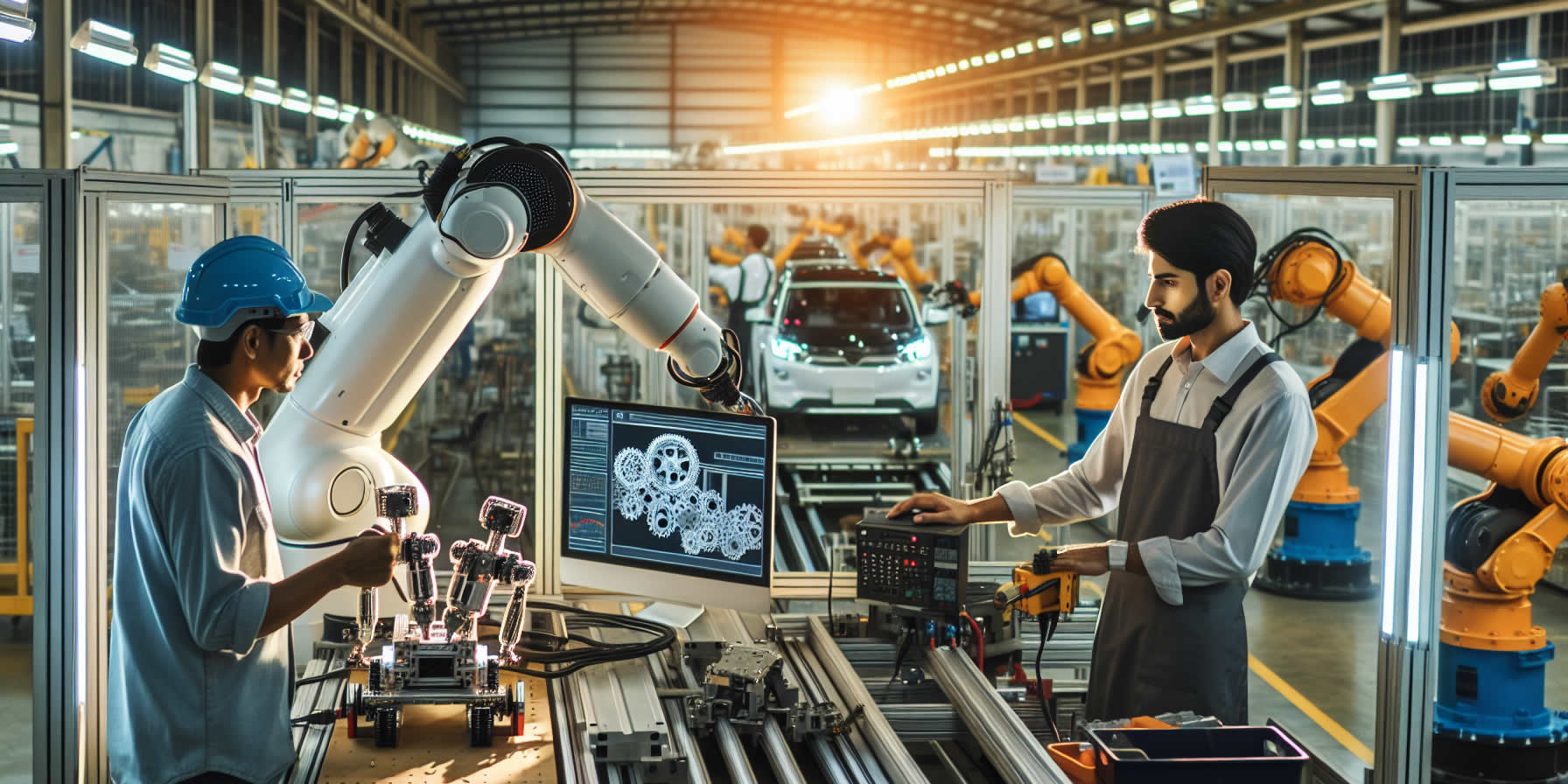Welding has long been a cornerstone of manufacturing, and with the advent of collaborative robot arms, or welding cobots, the industry is undergoing a transformative revolution. This article explores the impact of welding cobots on precision and efficiency, unravelling the technological advancements reshaping welding processes.
Understanding Welding Cobots
Welding cobots represent a leap forward in welding technology. Unlike traditional methods, these robotic arms are designed to collaborate with human welders, enhancing efficiency, precision, and versatility in welding operations.
Advanced welding techniques, vision systems, and collaborative safety features define the capabilities of welding cobots. These components contribute to the seamless integration of cobots into welding processes, ensuring enhanced performance and safety.
Precision in Welding Processes
Welding robots excel in achieving high-precision welds. Their ability to execute accurate and consistent weld seams makes them invaluable in applications requiring meticulous attention to detail, contributing to the overall quality of welded components.
Equipped with advanced sensor technologies, welding cobots enhance precision through real-time monitoring. Vision systems and sensors provide feedback, enabling adaptive adjustments during the welding process. This ensures precise welds even in complex configurations.
Efficiency in Welding Operations
Collaborative work environments between human welders and cobots contribute to increased efficiency. The seamless interaction between skilled human operators and the automated precision of welding cobots leads to continuous operation, reduced downtime, and improved overall welding speeds.
Customizable end-of-arm tooling and adaptive grippers play a crucial role in making welding cobots efficient. These components allow cobots to handle various welding configurations, optimising material handling and the overall welding process for enhanced efficiency.
Challenges and Solutions
Challenges in programming and integrating welding cobots are common. However, advancements in user-friendly interfaces and modular cobot designs are addressing these complexities, making integration accessible to businesses of varying sizes.
Ensuring safety in collaborative welding environments is a top priority. Innovations in safety features, such as advanced sensors and responsive control systems, contribute to creating secure work environments where human welders can collaborate safely with welding cobots.
Resistance to technological change is a challenge in welding operations. Effective communication, comprehensive training programs, and gradual implementation strategies are essential to overcome resistance and foster a positive reception to welding cobot integration.
Return on Investment (ROI) and Cost Considerations
Businesses evaluating the adoption of welding cobots must assess the economic benefits. Factors such as reduced labor costs, increased production output, and minimised errors contribute to the overall cost-effectiveness of welding cobot implementations.
Comparing welding cobots with traditional welding methods provides insights into the advantages of automation. The increased flexibility, adaptability, and collaborative capabilities of welding cobots showcase their superiority over traditional welding approaches in terms of efficiency and responsiveness.
While the initial investment in welding cobots may vary, the long-term cost savings and increased productivity often justify the upfront costs. Businesses benefit from reduced labor expenses, minimised errors, and a more efficient welding process, contributing to sustained cost-effectiveness.
Adoption Considerations for Businesses
Different industries have unique welding requirements. Businesses should seek welding cobot solutions that offer customization options to address industry-specific needs, ensuring optimal performance and adaptability in diverse welding environments.
Successful adoption of welding cobots involves workforce training to facilitate collaboration between human welders and cobots. Training programs should cover cobot operation, programming, and safety protocols, ensuring a seamless integration into existing welding teams.
Considering the scalability and future-proofing of welding systems is essential for businesses planning long-term investments. Choosing welding cobot solutions that can adapt to evolving technological trends and scale with growing operational needs ensures a sustainable and enduring welding strategy.
Future Trends and Developments
Ongoing innovations in welding cobot technologies focus on enhancing collaborative welding techniques. Advancements in smart welding systems, Industry 4.0 integration, and emerging technologies are shaping the future of welding processes.
The future holds exciting prospects for the integration of welding cobots with smart welding systems and Industry 4.0 technologies. Collaborative efforts between cobots, data analytics, and real-time monitoring aim to create seamlessly interconnected and intelligent welding ecosystems.
Industry Regulations and Compliance
Compliance with safety standards is paramount in welding cobot operations. Adhering to industry-specific safety regulations, implementing safety features, and conducting risk assessments contribute to creating a secure working environment in which welding cobots can collaborate safely with human welders.
Ethical considerations in welding cobot implementations involve ensuring fair treatment of human welders, transparent communication about automation intentions, and responsible use of data collected during operations. Businesses must prioritise ethical practices in adopting and deploying welding cobots to build trust and ensure a positive impact.
The adoption of welding cobots contributes to environmental sustainability by optimising resource utilisation, reducing waste, and minimising the overall environmental impact of welding operations. Efficient and adaptive welding processes align with environmentally conscious business practices.
Conclusion
In conclusion, the integration of welding cobots marks a revolutionary era in the welding industry. From achieving unprecedented precision to enhancing overall efficiency, these robotic collaborators are reshaping the way we approach welding processes. As businesses embrace this transformative technology, they position themselves not just for immediate gains but for a future where innovation, collaboration, and adaptability converge to redefine the very nature of welding. The synergy between human expertise and the precision of welding cobots opens doors to a new era of intelligent, efficient, and sustainable welding practices.









